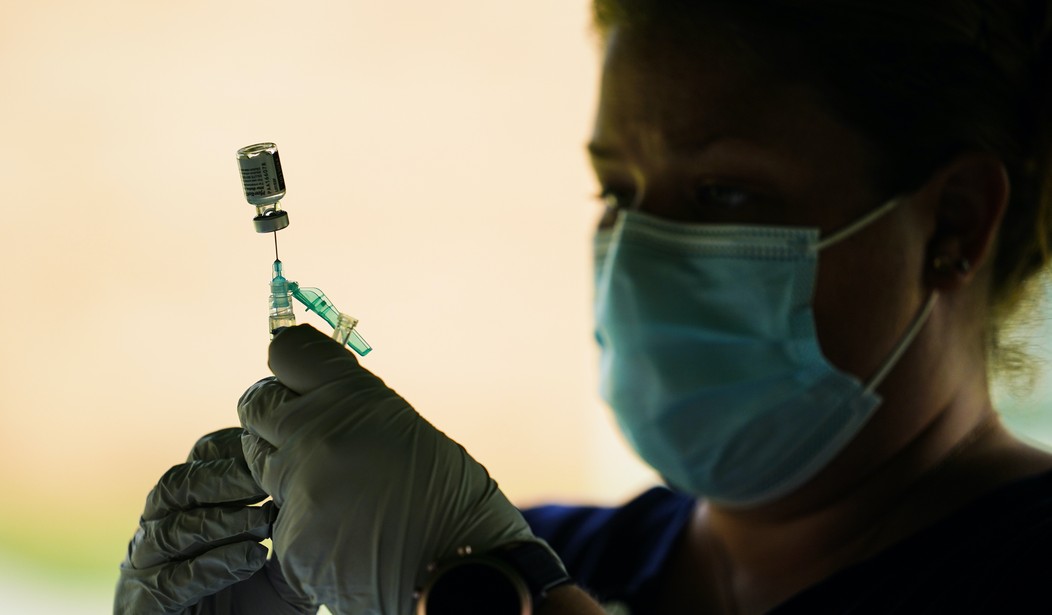Out: We need an immediate travel ban on southern Africa.
In: Southern Africa needs an immediate travel ban on us.
This is the second documented case in the U.S. and, like yesterday’s case in California, the results are broadly encouraging. The patient’s symptoms have already subsided. But there are three footnotes. First, the patient was vaccinated and had received a booster early last month yet still got infected and experienced a mild case. If you’re looking for evidence that Omicron will be better at dodging the vaccines than Delta was, there’s a data point.
Second, the patient hadn’t traveled abroad recently, which means they could only have been infected here in the U.S. And given the timeline of their infection, it means Omicron was already spreading domestically before South Africa announced its discovery of the new variant on November 24.
Third, it would have been a relief if this person carrying a possibly highly transmissible, immune-evasive variant had managed to avoid any indoor mass gatherings recently. Alas, we’re not that lucky.
The case in Minnesota is an adult male who had been vaccinated and who lives in Hennepin County, which includes Minneapolis, state health officials said. He developed mild symptoms on Nov. 22, was tested on Nov. 24, and no longer has symptoms.
The man had been in New York City in the days leading up to feeling sick and attended the Anime NYC 2021 convention at the Javits Center from Nov. 19 to Nov. 21…
Some 46,000 people attended the convention in 2019, according to its site.
A super-infectious variant circulating at a crowded event in America’s biggest city sounds like a sh*tstorm in the making…
If you attended the Anime NYC 2021 Convention at the Javits Center from November 18-22, get tested for #COVID19 as soon as possible.
➡️ https://t.co/fESkqpcKQo pic.twitter.com/niI8ENg3ez
— City of New York (@nycgov) December 2, 2021
…if Omicron proves to be as threatening as the doomsayers fear. But what if it isn’t? Watch Scott Gottlieb discuss new findings from Europe’s CDC (based on a small number of cases) that half of their Omicron patients are asymptomatic the and other half have only mild symptoms:
"What the CDC in Europe reported today is 50% of the cases they've seen outside South Africa have been asymptomatic, 50% have just presented with mild symptoms," says @ScottGottliebMD on Omicron. "The vaccines–seem to be protective against more severe disease." pic.twitter.com/61g2ksbcnU
— Squawk Box (@SquawkCNBC) December 2, 2021
Former Biden COVID advisor Andy Slavitt has been in touch with scientists he knows asking for updates on Omicron. He has good news too:
While not definitive this tells me that Omicron is not yet running wild in the US. It is not too late to take action.
Very pleased to see new steps in these key areas… 4/
— Andy Slavitt 🇺🇸💉 (@ASlavitt) December 2, 2021
Maybe that means Omicron can’t out-compete Delta after all. And even if it can, the longer it needs to take off here in the U.S., the less time it’ll have to run wild before new vaccines tailored to the variant reach the public.
The latest news from South Africa is mixed. Cases are skyrocketing in Gauteng province, the Omicron hot spot, suggesting that the variant does spread very quickly. There’s also evidence that it’s better than Delta at punching through immunity: “While previous infections and vaccinations may prevent serious illness, authorities have noticed higher level of ‘reinfections,’ which means ‘susceptibility of the population is greater,’ Anne von Gottberg, a clinical microbiologist at South Africa’s National Institute for Communicable Diseases, said during a World Health Organization briefing on Thursday.” Even so, modelers there think the peak in cases and hospitalizations in Gauteng will be less than half of what they were during the last wave earlier this year. And it might be that the uptick in reinfections is happening among people who had COVID long ago, whose immunity has since waned. The recently vaccinated may be better protected.
Virologists studying the variant’s genome have begun to wonder where such a strange mutant could have come from. Normally the virus mutates only incrementally after infecting people for the simple reason that it doesn’t last long in a human being’s body before it’s either defeated by antibodies or it kills its host. Over time, jumping from person to person, the virus can gradually change until at a certain point it looks distinct in key ways from the original virus. But Omicron looks wildly different, with 30 mutations to its spike protein; I remember reading recently how one expert didn’t expect to see a variant that foreign for another year or two. So where did it come from?
Two theories are kicking around. One is that an earlier iteration of the virus infected an immunocompromised person somewhere and that person couldn’t muster enough of an immune response to clear it. So it sat in their system, replicating and mutating day by day, for God knows how long. A healthy person might clear SARS-CoV-2 in a few days. An immunocompromised person might not clear it for months. Maybe, after a long stretch of mutation in its host until it became Omicron, the new variant jumped from that immunocompromised person to someone healthy and suddenly was off and running. That’s the theory most experts seem to favor.
But there’s an alternative:
The theory goes that some type of animal, potentially rodents, was infected with the SARS-CoV-2 virus sometime in mid-2020. In this new species, the virus evolved, accumulating roughly 50 mutations on the spike protein before spilling back over into people…
One of the peculiar traits of SARS-2 underpins this thinking. It is what virologists describe as a promiscuous virus; it is capable of infecting a number of species. Dogs and house cats. Large cats. Mink. White-tailed deer. Given how easily the virus seems to jump from species to species, people studying it assume this list will grow…
Robert Garry, a professor of microbiology and immunology at Tulane Medical School, has been tracking the SARS-2 mutations that have arisen. Seven are associated with rodent adaptation — the changes that seemed to allow the virus to infect mice, rats, and related species. All seven of those mutations are in Omicron, Garry noted. He believes it’s a toss-up whether the variant developed in an animal or a human host, but if it’s the former, his bet would be on rodents.
Think of it as “gain of function” the old-fashioned way. Instead of sinister Dr. Frankensteins engineering a virus and passing it through different animals in a lab until they have a highly mutated pathogen capable of afflicting humans, Mother Nature may have done it out in the wild. And if it sounds crazy to think of the virus hopping from people to animals and then spreading widely among the local fauna, read this. Just last month, tests on white-tailed deer in the northeast and midwest estimated that *40 percent* had antibodies against SARS-CoV-2. There are thousands upon thousands of animals out there with COVID, it seems. Maybe Omicron is what you get when the virus infects rodents or deer or whatever, spends a year mutating among that population, and then circles back to people.
In lieu of an exit question, read this warning from James Hamblin, a doctor, on the new variant. It’s possible that Omicron will be a little less virulent than Delta was. It’s unlikely that it’ll be a lot less virulent.








Join the conversation as a VIP Member